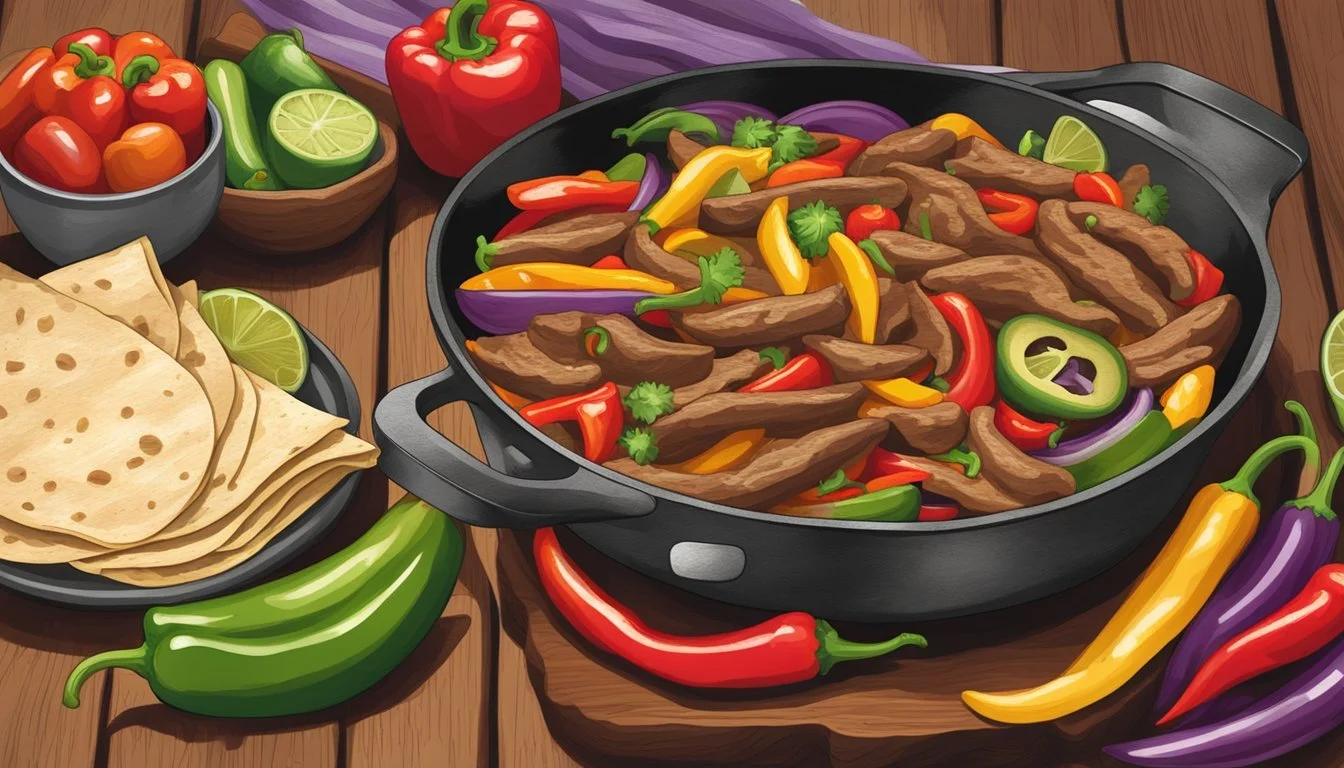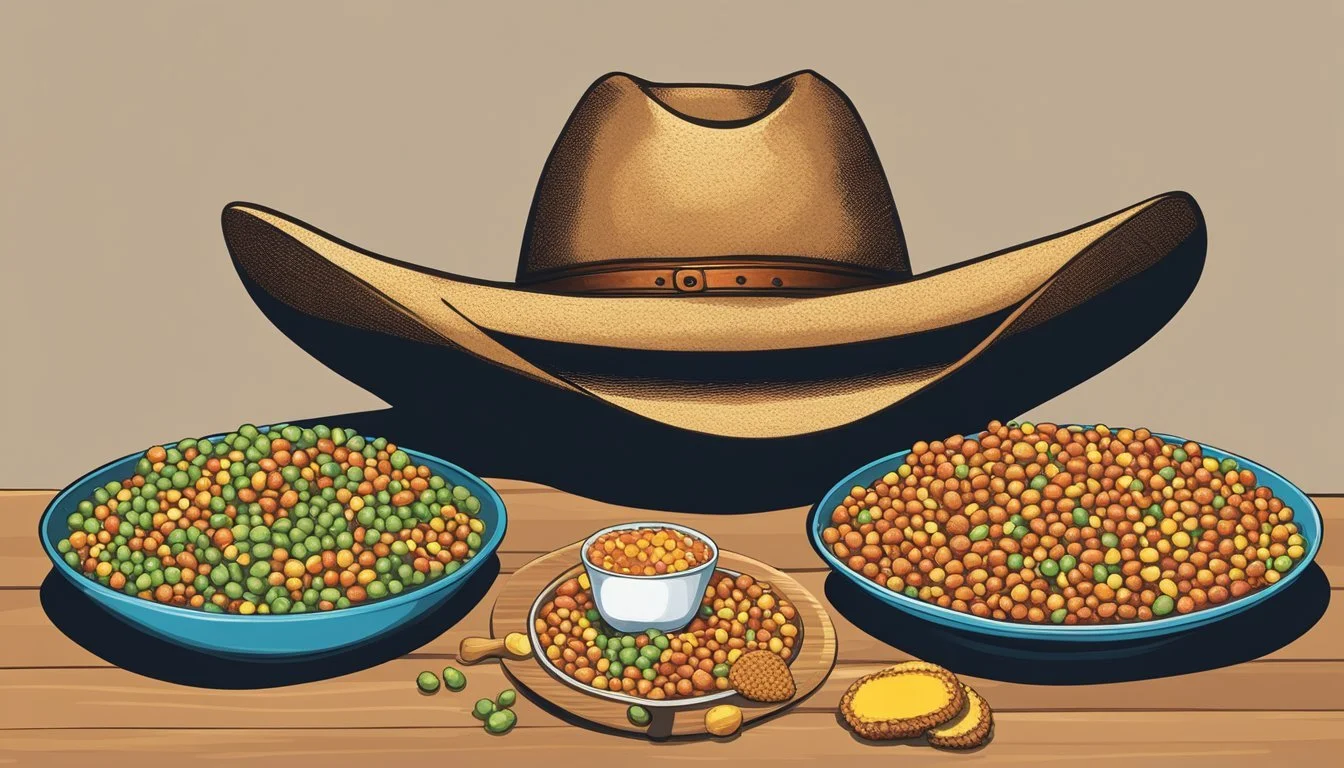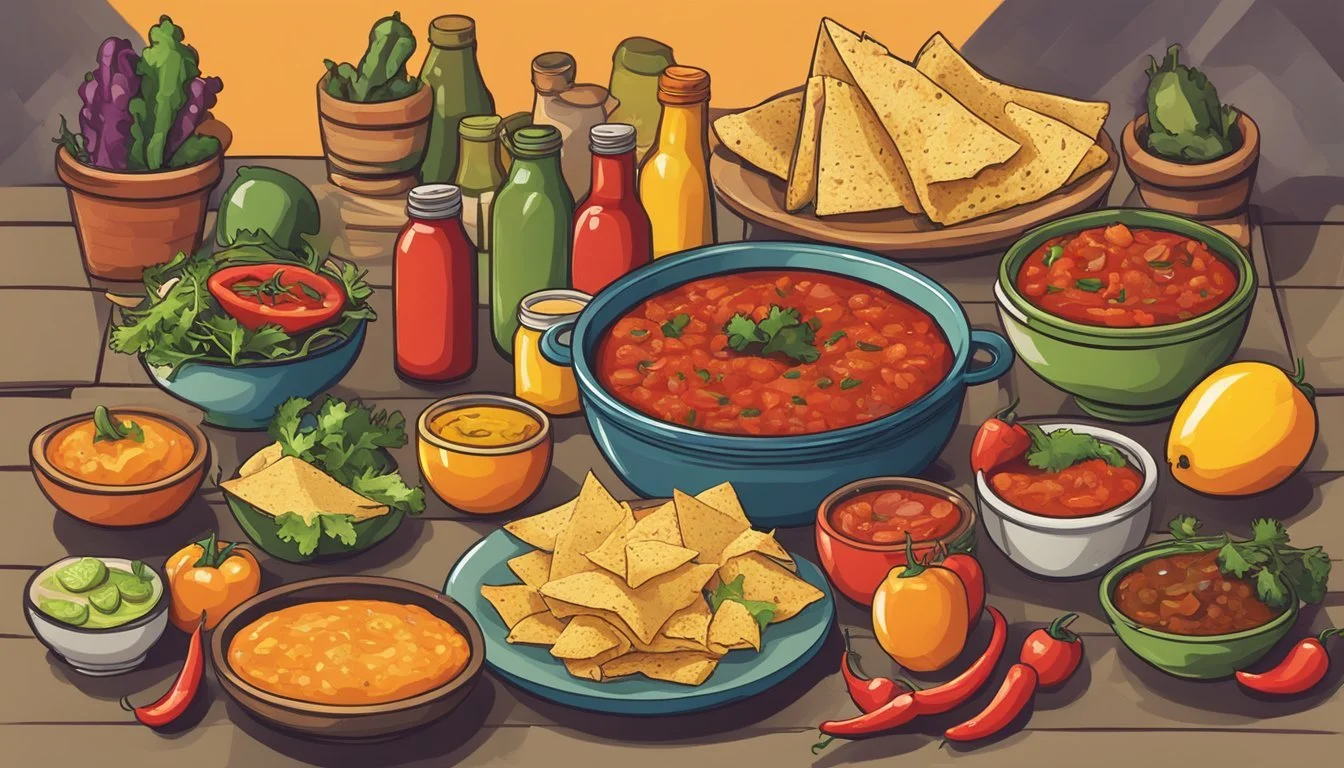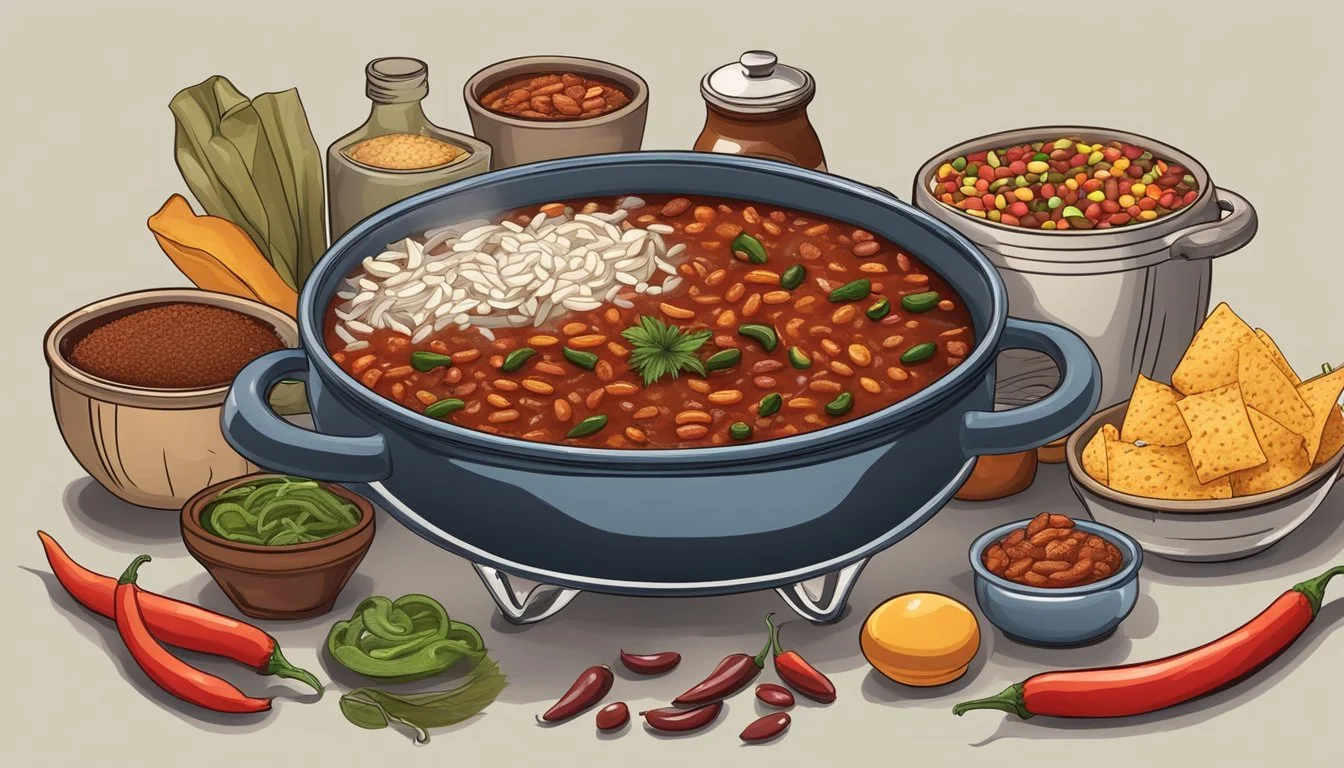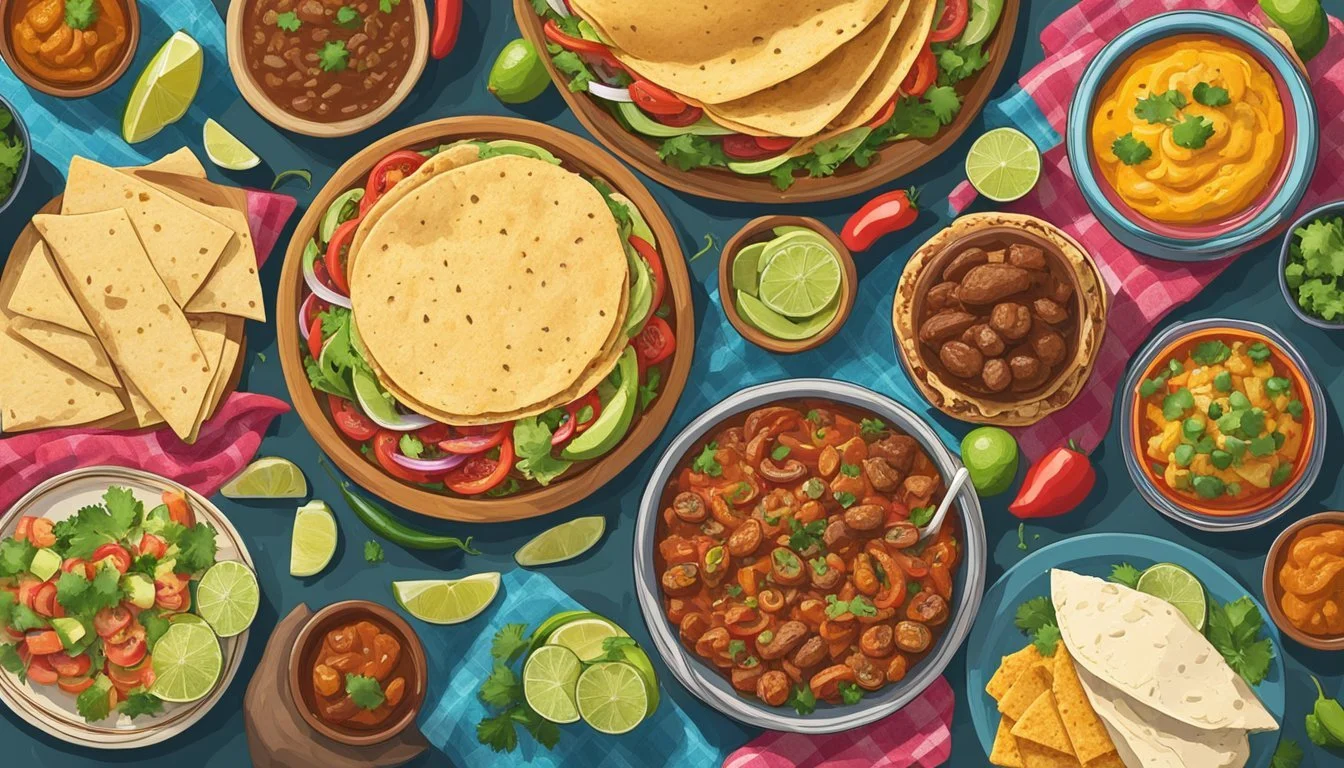7 Texas Food Myths Debunked
Revealing the Truth
Texan cuisine is rich and varied, drawing from a long history of cultural influences and local traditions. Understanding the truth behind common food myths can help people enjoy authentic dishes without unnecessary misconceptions.
Many myths surrounding Texas food continue to persist, often overshadowing the genuine flavors and practices that make up the state's culinary identity. By addressing these misconceptions, readers can make more informed choices about what they eat.
1) Brisket Isn't Always Smoked
Brisket, a quintessential part of Texas BBQ, is often associated primarily with smoking. This method involves cooking the meat using indirect heat and smoke over an extended period, usually several hours.
However, brisket can be prepared using various methods beyond just smoking. For instance, in Italian cuisine, it is commonly used in bollito misto, a traditional stew. This dish involves boiling the brisket along with other meats, creating a rich and hearty meal.
In Vietnamese cuisine, brisket plays an important role in phở, a light and fragrant soup. The meat is typically simmered to achieve a tender texture, contributing to the broth's deep flavor.
Germany also has its own brisket preparation method. In this country, it is frequently braised, a cooking method involving slow-cooking the meat in liquid. This process results in a tender, flavorful dish.
Pakistan's national dish, nihari, showcases another alternative way of preparing brisket. This dish involves slow-cooking brisket with spices to create a deeply flavored and aromatic stew. This method highlights the versatility of brisket beyond the typical smoking technique.
2) Fajitas Originated in Mexico
The origin of fajitas is often attributed to Mexico, but this popular dish has roots firmly planted in Texas.
In the 1930s, Mexican cattle ranchers working in West Texas, known as vaqueros, were given skirt steak as part of their pay. This cut of beef is tough and required creative preparation, leading to the development of what we now recognize as fajitas.
Vaqueros would cook the steak over an open fire, often with onions and peppers, which added flavor and tenderness. This preparation method quickly became popular in South Texas, especially in the Rio Grande Valley.
By the 1960s, restaurants in Texas began to serve fajitas, and they gained popularity. The dish's signature sizzle and vibrant presentation made it a favorite at festivals and restaurants alike.
Contrary to the myth, fajitas are not a traditional Mexican dish but rather a Tex-Mex creation. The influence of Mexican cuisine is undeniable, but the concept and evolution of fajitas occurred on Texan soil.
The widespread popularity in the United States can be credited to Tex-Mex cuisine, which blends Mexican and American culinary traditions.
3) Cowboy Caviar Debunked
Cowboy Caviar, also known as Texas Caviar, has a storied history in southern cuisine. It was created by a New Yorker in Texas, combining black-eyed peas with elements of pico de gallo.
Many believe it to be an old traditional dish, when in reality, it was popularized relatively recently. Since then, its popularity has surged, especially in California.
Another myth is that Cowboy Caviar always contains meat. This is incorrect as the dish is predominantly vegetarian, focusing on beans, vegetables, and tangy dressings.
Some people think its name implies that it's a luxury item like real caviar. Cowboy Caviar is actually a humble, hearty salad designed to be affordable and accessible.
Despite these myths, Cowboy Caviar remains a vibrant, flavorful dish readily adaptable to various tastes and dietary preferences.
4) Texas BBQ Sauce Dominates
Texas BBQ is often associated with its legendary meats, but the role of BBQ sauce is frequently misunderstood. While some Texas joints, like Lockhart’s Kreuz Market, historically resisted offering sauce, many others embrace it as a vital component of their BBQ experience.
Contrary to the belief that dry rubs alone define Texas BBQ, sauce can enhance the flavors and textures of smoked meats. The sauces often blend rich, smoky flavors with a hint of sweetness or spice, complementing the robust taste of the meat.
Regional variations also exist within Texas. Central Texas BBQ sauce tends to be tomato-based with a balance of sweet and tangy notes. In East Texas, you might find sauces with a bit more heat, incorporating influences from neighboring states.
Some BBQ enthusiasts argue that true Texas BBQ needs no sauce, while others appreciate the added layer of flavor it provides. Ultimately, the choice to use sauce or not is up to the individual, reflecting personal taste and the BBQ style of the establishment.
In places across Texas, BBQ sauces are crafted with as much care and tradition as the meat itself. Whether served on the side or brushed on during cooking, these sauces continue to play a notable role in many BBQ restaurants and home kitchens. Texas BBQ highlights diversity, and its sauces are an integral part of that rich culinary tapestry.
5) Breakfast Tacos Are New
A common misconception is that breakfast tacos are a recent culinary invention. This couldn't be further from the truth. Breakfast tacos have been an integral part of Texan and Mexican cuisine for generations, deeply rooted in the local culture.
The tradition of eating tortillas filled with eggs, beans, and other breakfast staples dates back many years. Families in Texas and Mexico have long enjoyed these quick and versatile morning meals. They are seen as a heritage dish, passed down from one generation to the next.
Even though breakfast tacos have only gained nationwide popularity in recent years, they have always had a special place in Texan kitchens. Regulars at spots like Granny's Tacos in Austin have known for years just how delightful these breakfast treats can be. Their chilaquiles taco, with its mix of salsa verde, corn chips, and chicken, is a testament to the rich history of the dish.
In summary, breakfast tacos are not a new fad but rather a beloved staple with deep historical roots. Their long-standing presence in Texan and Mexican cuisine underscores their lasting appeal and cultural significance.
6) All Salsa is Spicy
It's a common myth that all salsa is spicy. This misconception might stem from the association of salsa with hot peppers. In reality, salsa comes in a variety of flavors and heat levels.
Salsa can range from mild to very spicy, depending on the ingredients used. For example, a traditional pico de gallo made with fresh tomatoes, onions, and cilantro has a mild flavor.
Many salsas rely on ingredients like mango, pineapple, or even cucumber, which add a sweet or savory element rather than heat. Restaurants often offer a variety of salsas to cater to different taste preferences.
Even within Mexican cuisine, salsas can be found that are entirely free of chili peppers. A salsa verde, which is made from tomatillos, can be prepared without adding any spicy peppers.
Some people prefer these milder versions because they add flavor without overwhelming the palate. So next time you're at a Mexican restaurant, don't hesitate to ask if they have any mild salsa options available.
This myth might discourage some people from trying salsa, thinking it's all too hot for their taste. Knowing the diverse nature of salsa can help people appreciate the wide range of flavors it can offer.
7) Chili Always Includes Beans
Many believe that authentic chili must include beans. In truth, this is not a universal rule. Traditional Texas chili, often referred to as "chili con carne," does not contain beans. This style focuses on meat, typically beef, and a blend of spices.
The Terlingua Chili Cook Off, established in 1967, reinforces this notion. Its rules explicitly state that beans or other fillers are not allowed. This cook-off, considered a cornerstone of Texas chili tradition, highlights the state's preference for bean-free chili.
On the other hand, beans did find their way into chili recipes in other regions. In the 19th century, areas with significant Mexican and Native American populations incorporated beans for their nutritional value. This adaptation gave rise to diverse chili recipes across the United States.
Some chili enthusiasts argue that adding beans enhances the dish, while others see it as a departure from tradition. This debate has sparked countless discussions among cooks and food lovers. Each side presents a passionate case for their preferred chili style.
Regional variations have furthered the incorporation of beans in chili. For instance, some Midwestern styles, like Cincinnati chili, often include beans and are served over spaghetti or hot dogs.
Ultimately, the inclusion of beans in chili is a matter of personal or regional preference. While true Texas chili does not include beans, other chili variants from different parts of the country embrace this ingredient.
Misconception: All Texas Food Is Spicy
Contrary to popular belief, Texas cuisine offers a variety of flavors, not all dominated by heat. While chili peppers feature prominently, many traditional dishes cater to milder tastes.
Exploring the Mild Side of Texas Cuisine
Texas boasts a rich culinary tradition with many dishes that shy away from spiciness.
Barbecue stands out as a prime example. Texas barbecue focuses on the meat's natural flavors. Slow-cooked brisket, smoky ribs, and tender pulled pork are often seasoned with mild rubs and sauces.
Tex-Mex cuisine, another staple, includes options like cheese enchiladas, crispy tacos, and quesadillas. These dishes typically prioritize flavor over spiciness. Even dishes like guacamole, a popular accompaniment, emphasize fresh ingredients like avocado, lime, and cilantro without significant heat.
Traditional Texan Dishes Without the Heat
Several traditional Texan dishes do not rely on spicy elements at all.
Chicken-fried steak, for example, is a Southern comfort food classic. Breaded and fried to perfection, it is usually served with creamy gravy, mashed potatoes, and green beans.
King Ranch chicken casserole is another mild favorite. Layers of tortilla, chicken, cheese, and a creamy sauce make this dish hearty and satisfying.
Lastly, pecan pie, a dessert deeply rooted in Texan tradition, offers a sweet finish to any meal. These dishes highlight the versatility of Texan cuisine, proving that not all Texas food is about the spice.
Tex-Mex vs. Authentic Mexican: What's the Difference?
Tex-Mex and authentic Mexican cuisine, although often confused, have distinct origins and key ingredients that set them apart. Understanding the differences helps appreciate each cuisine's unique flavors and cultural significance.
Origins of Tex-Mex
Tex-Mex originates from the Tejano culture in Texas, which blends Spanish and Mexican influences. The term "Tex-Mex" was first used in the 1870s, referring to the Texas-Mexican Railway. By the mid-20th century, it described a specific style of cuisine popularized in Texas.
Tex-Mex developed due to the adaptation of Mexican food to Texan tastes, incorporating ingredients readily available in the United States. This blend of cultures resulted in a distinct culinary tradition that maintains Mexican roots while integrating American elements.
Key Ingredients That Distinguish Tex-Mex
Cheese: Tex-Mex features yellow cheese, such as cheddar or Velveeta, whereas Mexican dishes use white cheeses like cotija or queso fresco.
Tortillas: Hard taco shells are typical in Tex-Mex, contrasting with the soft corn or flour tortillas used in Mexican cuisine.
Sauces: Tex-Mex sauces are often red, cheesy, and creamy. Authentic Mexican sauces include mole and thinner sauces like crema or salsa verde.
Beans: Refried beans in Tex-Mex are usually pinto beans, whereas Mexican cuisine frequently uses black beans.
Spices: Tex-Mex incorporates cumin and chili powder liberally, while Mexican dishes use a broader range of fresh chilies and herbs.
Meat: Ground beef is common in Tex-Mex dishes, unlike Mexican cuisine, which features a variety of meats like pork and chicken prepared in traditional ways.
Corn: Sweet corn is common in Tex-Mex, while Mexican cuisine uses corn mainly in tortillas and tamales.
Debunking the Myth of Texas BBQ Uniformity
The belief that Texas BBQ is a uniform culinary tradition is far from reality. In truth, Texas BBQ showcases significant regional variations and employs a variety of techniques and ingredients.
Regional Variations in Texas BBQ
Texas BBQ is diverse, with distinct styles emerging from different regions. Central Texas BBQ, known for its "meat market" style, focuses on beef brisket seasoned with a simple mix of salt and pepper, smoked over oak wood. This minimalist approach highlights the quality of the meat.
East Texas BBQ, by contrast, leans towards a Southern influence, featuring pork shoulder and ribs cooked in a sweet, tomato-based sauce. Meat is often slow-cooked until it nearly falls off the bone.
In South Texas, the BBQ tradition includes barbacoa, which involves slow-cooking the head of a cow, often wrapped in maguey leaves. This method yields tender, flavorful meat that is commonly enjoyed in tacos.
Finally, West Texas BBQ, also known as "cowboy-style," typically uses mesquite wood and cooks over direct heat, resulting in a smokier, charred flavor. This style often includes a wider variety of meats like goat and mutton.
Unique Techniques and Ingredients
Each Texas BBQ region employs unique techniques and ingredients that set them apart. Central Texas pitmasters use indirect heat and low temperatures to smoke brisket for up to 18 hours, emphasizing a balance between smoke and meat flavor.
East Texas BBQ includes a signature sweet, tangy sauce applied generously throughout the cooking process. The meat here often benefits from a combination of smoking and finishing off in the oven.
In South Texas, the traditional barbacoa method involves slow-cooking meat in an underground pit, covered with embers and earth. This ancient technique infuses the meat with robust, earthy flavors.
West Texas BBQ's preference for mesquite wood gives a distinct, strong smoke flavor. The high-temperature, direct-heat cooking translates to a crusty exterior and juicy interior, appealing to those who favor a charred taste.
These regional differences and unique techniques highlight the rich diversity within Texas BBQ, debunking the myth that it is a monolithic cuisine.


